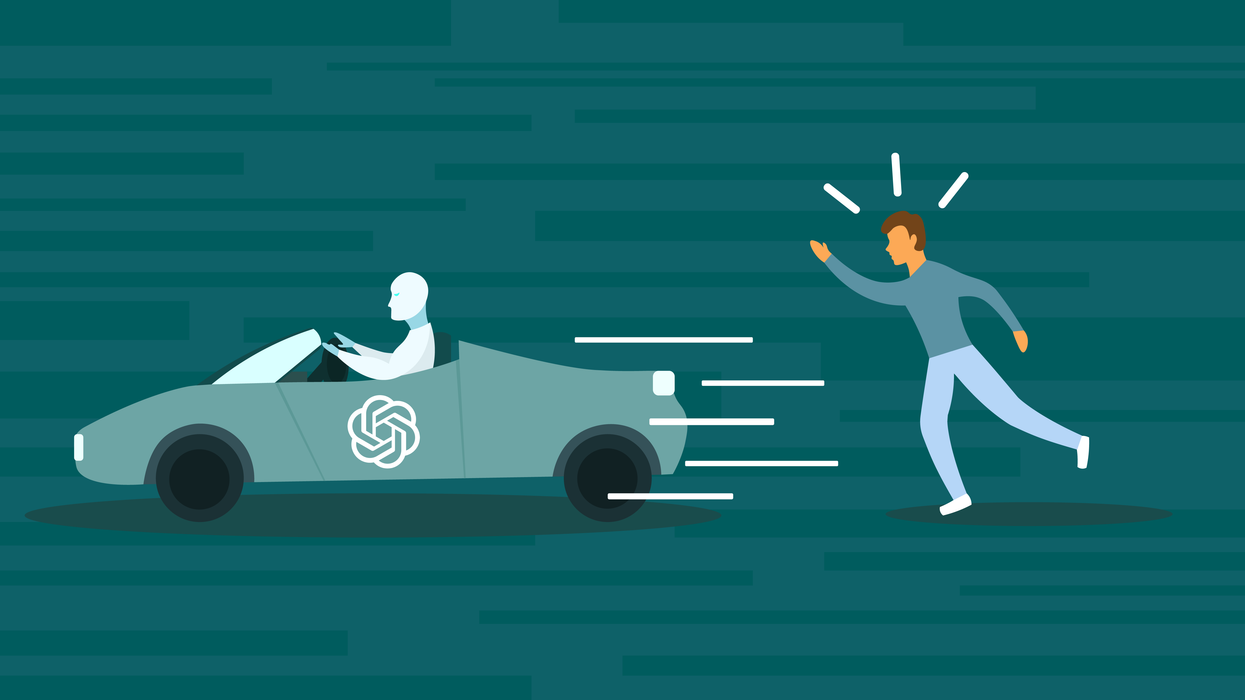AI Is Rapidly Advancing, but the Question Is, Can We Keep Up?

One way to measure just how white-hot AI development has become: the world is running out of the advanced graphics chips necessary to power AI programs. While Intel central processing units were once the most sought-after industry leaders, advanced graphics chips like Nvidia’s are designed to run multiple computations simultaneously, a baseline necessity for many AI models.
An early version of ChatGPT required around 10,000 graphics chips to run. By some estimates, newer updates require 3-5 times that amount of processing power. As a result of this skyrocketing demand, shares of Nvidia have jumped 165% so far this year.
Building on this momentum, this week, Nvidia revealed a line-up of new AI-related projects including an Israeli supercomputer project and a platform utilizing AI to help video game developers. For smaller companies and startups, however, getting access to the vital underlying technology that powers AI development is already becoming less about meritocracy and more about “who you know.” According to the Wall Street Journal, Elon Musk scooped up a valuable share of server space from Oracle this year before anyone else got a crack at it for his new OpenAI rival, X.AI.
The massive demand for Nvidia-style chips has also created a lucrative secondary market, where smaller companies and startups are often outbid by larger and more established rivals. One startup founder compares the fevered crush of the current chip marketplace to toilet paper in the early days of the pandemic. For those companies that don’t get access to the most powerful chips or enough server space in the cloud, often the only remaining option is to simplify their AI models, so they can run more efficiently.
Beyond just the design of new AI products, we’re also at a key moment for users and consumers, who are still figuring out what sorts of applications are ideal for AI and which ones are less effective, or potentially even unethical or dangerous. There’s now mounting evidence that the hype around some of these AI tools is reaching a lot further than the warnings about its drawbacks.
JP Morgan Chase is training a new AI chatbot to help customers choose financial securities and stocks, known as IndexGPT. For now, they insist that it’s purely supplemental, designed to advise and not replace money managers, but it may just be a matter of time before job losses begin to hit financial planners along with everyone else.
A lawyer in New York just this week was busted by a judge for using ChatGPT as part of his background research. When questioned by the judge, lawyer Peter LoDuco revealed that he’d farmed out some research to a colleague, Steven A. Schwartz, who had consulted with ChatGPT on the case. Schwartz was apparently unaware that the AI chatbot was able to lie – transcripts even show him questioning ChatGPT’s responses and the bot assuring him that these were, in fact, real cases and citations.
New research by Marucie Jakesch, a doctoral student from Cornell University, suggests that even users who are more aware than Schwartz about how AI works and its limitations may still be impacted in subtle and subconscious ways by its output.
Not to mention, according to data from Intelligent.com, high school and college students already – on the whole – prefer utilizing ChatGPT for help with schoolwork over a human tutor. The survey also notes that advanced students tend to report getting more out of using ChatGPT-type programs than beginners, likely because they have more baseline knowledge and can construct better and more informative prompts.
But therein lies the big drawback to using ChatGPT and other AI tools for education. At least so far, they’re reliant on the end user writing good prompts and having some sense about how to organize a lesson plan for themselves. Human tutors, on the other hand, have a lot of personal experience in these kinds of areas. Someone who instructs others in foreign languages professionally probably has a good inherent sense of when you need to focus on expanding your vocabulary vs. drilling certain kinds of verb and tense conjugations. They’ve helped many other students prepare for tests, quizzes, and real-world challenges, while computer software can only guess at what kinds of scenarios its proteges will face.
A recent Forbes editorial by academic Thomas Davenport suggests that, while AI is getting all the hype right now, other forms of computing or machine learning are still going to be more effective for a lot of basic tasks. From a marketing perspective in 2023, it’s helpful for a tech company to throw the “AI” brand around, but it’s not magically going to be the answer for every problem.
Davenport points to a similar (if smaller) whirlwind of excitement around IBM’s “Watson” in the early 2010s, when it was famously able to take out human “Jeopardy!’ champions. It turns out, Watson was a general knowledge engine, really best suited for jobs like playing “Jeopardy.” But after the software gained celebrity status, people tried to use it for all sorts of advanced applications, like designing cancer drugs or providing investment advice. Today, few people turn to Watson for these kinds of solutions. It’s just the wrong tool for the job. In that same way, Davenport suggests that generative AI is in danger of being misapplied.
While the industry and end users both race to solve the AI puzzle in real time, governments are also feeling pressure to step in and potentially regulate the AI industry. This is much easier said than done, though, as politicians face the same kinds of questions and uncertainty as everyone else.
OpenAI CEO Sam Altman has been calling for governments to begin regulating AI, but just this week, he suggested that the company might pull out of the European Union entirely if the regulations were too onerous. Specifically, Altman worries that attempts to narrow what kinds of data can be used to train AI systems – specifically blocking copyrighted material – might well prove impossible. “If we can comply, we will, and if we can’t, we’ll cease operating,” Altman told Time. “We will try, but there are technical limits to what’s possible.” (Altman has already started walking this threat back, suggesting he has no immediate plans to exit the EU.)
In the US, The White House has been working on a “Blueprint for an AI Bill of Rights,” but it’s non-binding, just a collection of largely vague suggestions. It’s one thing to agree “consumers shouldn’t face discrimination from an algorithm” and “everyone should be protected from abusive data practices and have agency over how their data is used.” But enforcement is an entirely different animal. A lot of these issues already exist in tech, and are much larger than AI, and the US government already doesn’t do much about them.
Additionally, it’s possible AI regulations won’t work well at all if they aren’t global. Even if you set some policies and get an entire nation’s government to agree, how to set similar worldwide protocols? What if US and Europe agree but India doesn’t? Everyone around the world accesses roughly the same internet, so without any kind of international standard, it’s going to be much harder for individual nations to enforce specific rules. As with so many other AI developments, there’s inherent danger in patchwork regulations; it could allow some companies, or regions, or players to move forward while others are unfairly or ineffectively stymied or held back.
The same kinds of socio-economic concerns around AI that we have nationally – some sectors of the work force left behind, the wealthiest and most established players coming in to the new market with massive advantages, the rapid spread of misinformation – are all, in actuality, global concerns. Just as the hegemony of Microsoft and Google threaten the ability of new players to enter the AI space, the West’s early dominance of AI tech threatens to push out companies and innovations from emerging markets like Southeast Asia, Subsaharan Africa, and Central America. Left unfettered, AI could potentially deepen social, economic, and digital divisions both within and between all of these societies.
Undaunted, some governments aren’t waiting around for these tools to develop any further before they start attempting to regulate them. New York City has already set up some rules about how AI can be used during the hiring process while will take effect in July. The law requires any company using AI software in hiring to notify candidates that it’s being used, and to have independent auditors check the system annually for bias.
This sort of piecemeal figure-it-out-as-we-go approach is probably what’s going to be necessary, at least short-term, as AI development shows zero signs of slowing down or stopping any time soon. Though there’s some disagreement among experts, most analysts agree with Wharton professor and economist Jeremy Siegel, who told CNBC this week that AI is not yet a bubble. He pointed to the Nvidia earnings as a sign the market remains healthy and not overly frothy. So, at least for now, the feverish excitement around AI is not going to burst like a late ‘90s startup stock. The world needs to prepare as if this technology is going to be with us for a while.
- Congress Helps Sam Altman Sell His Chatbot to the American People ›
- 'Open Letter' Proposing 6-Month AI Moratorium Continues to Muddy the Waters Around the Technology ›
- Could Lack of Access to Training Data Block Lightning-Fast AI Development? ›
- LA Tech Week: How To Create Responsible AI in Entertainment - dot.LA ›




